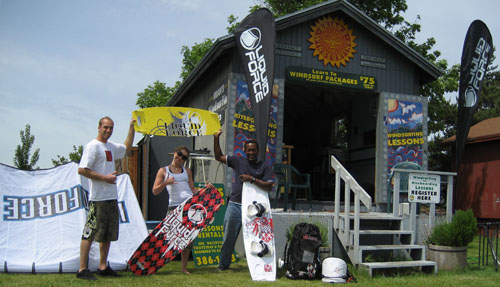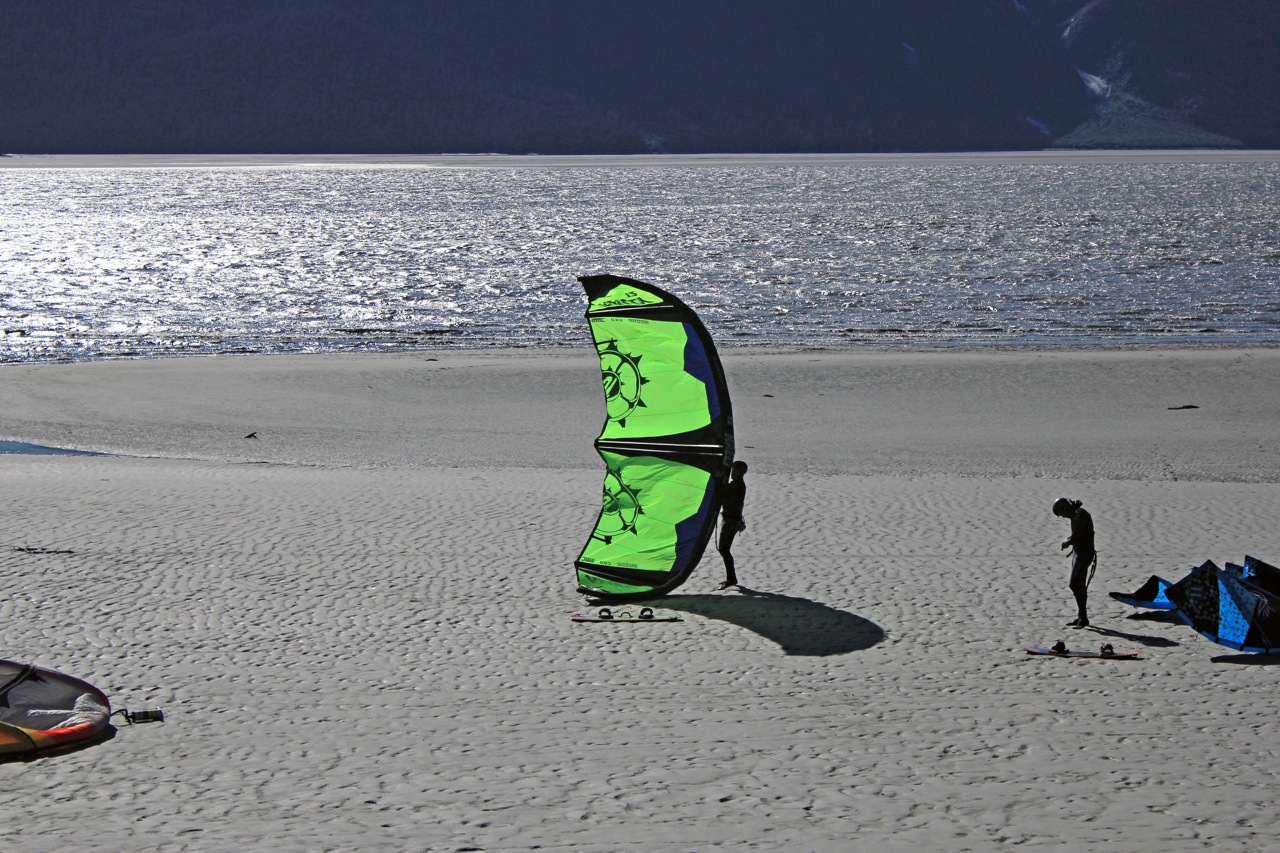Source(google.com.pk)
Kite Surfing Seattle Biography
By Seattle Times news services
Stephen Schafer, photographed kiteboard surfing, was fatally attacked by sharks Wednesday off a Florida beach.
Enlarge this photo
CHRIS SCHULTZ / AP
Stephen Schafer, photographed kiteboard surfing, was fatally attacked by sharks Wednesday off a Florida beach.
An experienced kite surfer was surrounded by sharks and killed about one-quarter mile offshore, and a scientist says young great white sharks — of "Jaws" notoriety — are among the suspects.
Stephen Howard Schafer, 38, died of shark bites Wednesday off the coast of Stuart, about 100 miles north of Miami. He is the first person to die of a shark attack in Florida waters in five years and only the 14th since 1896. Beaches remained open Thursday.
Scientist Grant Gilmore said he and colleagues could compare characteristic bite patterns from among many shark species that live or visit off Florida's Atlantic coast to Schafer's wounds.
"It can be done," Gilmore said. "It would be nice to have closure on this, to know what it was, especially since the man, tragically, died."
Great whites — made infamous by the Academy Award-winning 1975 film "Jaws," starring Roy Scheider, Robert Shaw and Richard Dreyfuss — prefer colder northern Atlantic Ocean waters and usually aren't thought of as a Florida shark. But smaller, 6- to 8-foot sharks migrate to Florida's east coast during winter.
Of the many types of sharks off Florida's Atlantic coast, three of the four species known to attack humans — great hammerheads, bulls and tigers — prefer warm water. They leave the area or go deep in winter.
"The only other species that gathers in abundance out there in the winter are the juvenile great white sharks," Gilmore said. They eat their way through a migrating parade of 3- to 4-foot sharp nose sharks that travel south from New England waters to Florida.
Cooler ocean water usually keeps great whites north of Cape Canaveral, Gilmore said, but this winter has been unusually cold. Gilmore said it is unusual to have a person bitten by a shark off Florida's east coast this time of year.
Daniel Lund, a Martin County lifeguard, was looking through his binoculars about 4 p.m. Wednesday and saw Schafer floating about 500 yards offshore, in an unguarded stretch of ocean just south of Stuart Beach, officials said.
When Lund paddled out, he found Schafer encircled by sharks.
"The one thing he said is he'd been bitten by a shark," said Lund, 46.
The lifeguard put Schafer on a rescue board and returned to shore. Officials performed cardiopulmonary resuscitation on the victim, who had multiple bite wounds, and he was taken to Martin Memorial North Medical Center, where he died.
advertising
A Martin County Sheriff's Office report released Thursday said Schafer had a serious, 8- to 10-inch bite on his right thigh and numerous teeth marks on his right and left buttocks. The report also said he had bruising inside his right arm and that his right hand had wounds that could have occurred as he tried to fight off a shark.
Shark attacks, especially fatal ones, are extremely rare, said George Burgess, a leading shark expert who directs the International Shark Attack File at the University of Florida's Museum of Natural History.
"Internationally, we've been averaging four fatalities per year, despite the fact that there are billions and billions of human hours spent in the sea every year," Burgess said. "Your chances of dying in the mouth of a shark are close to infinitesimal."
The United States, however, leads the world in the number of unprovoked shark attacks — some deadly, some not, with 1,032 documented since 1670, according to the International Shark Attack File. Of those, 50 were fatal. Florida leads the world with more than 600 attacks.
Burgess said it was too soon to say whether Schafer was bitten by more than one shark but that, once a lot of blood is in the water, other sharks sometimes investigate and may attack.
Friends said Schafer always followed the buddy system while surfing and were surprised he was in the water alone.
"We always know that [sharks] are out there," said Teague Taylor, 36, a childhood friend who says Schafer taught him to surf. "It's hard to believe that such an experienced waterman would make that one mistake."
Schafer, an artist and graphic designer, was drawn to the water as a child. He surfed competitively and later started sailing, windsurfing and kiteboarding. Kiteboarders surf across the water on boards strapped to their feet, using large, curved sails to pull them along.
"He had to be around the water," said Taylor, who manages a local surf store.
Barry Tice, who said he has been at Martin County beaches when lifeguards called bathers out of the water because of sharks, remembered Schafer for his kindness.
"I met him on the beach one day and asked him all about kiteboarding," Tice said. "He was a super nice guy. And I'll tell you, the lifeguard who pulled him out deserves a medal."
Compiled from Scripps Howard News Service, The Associated Press and Cox Newspapers






















Kite Surfing Seattle Biography
By Seattle Times news services
Stephen Schafer, photographed kiteboard surfing, was fatally attacked by sharks Wednesday off a Florida beach.
Enlarge this photo
CHRIS SCHULTZ / AP
Stephen Schafer, photographed kiteboard surfing, was fatally attacked by sharks Wednesday off a Florida beach.
An experienced kite surfer was surrounded by sharks and killed about one-quarter mile offshore, and a scientist says young great white sharks — of "Jaws" notoriety — are among the suspects.
Stephen Howard Schafer, 38, died of shark bites Wednesday off the coast of Stuart, about 100 miles north of Miami. He is the first person to die of a shark attack in Florida waters in five years and only the 14th since 1896. Beaches remained open Thursday.
Scientist Grant Gilmore said he and colleagues could compare characteristic bite patterns from among many shark species that live or visit off Florida's Atlantic coast to Schafer's wounds.
"It can be done," Gilmore said. "It would be nice to have closure on this, to know what it was, especially since the man, tragically, died."
Great whites — made infamous by the Academy Award-winning 1975 film "Jaws," starring Roy Scheider, Robert Shaw and Richard Dreyfuss — prefer colder northern Atlantic Ocean waters and usually aren't thought of as a Florida shark. But smaller, 6- to 8-foot sharks migrate to Florida's east coast during winter.
Of the many types of sharks off Florida's Atlantic coast, three of the four species known to attack humans — great hammerheads, bulls and tigers — prefer warm water. They leave the area or go deep in winter.
"The only other species that gathers in abundance out there in the winter are the juvenile great white sharks," Gilmore said. They eat their way through a migrating parade of 3- to 4-foot sharp nose sharks that travel south from New England waters to Florida.
Cooler ocean water usually keeps great whites north of Cape Canaveral, Gilmore said, but this winter has been unusually cold. Gilmore said it is unusual to have a person bitten by a shark off Florida's east coast this time of year.
Daniel Lund, a Martin County lifeguard, was looking through his binoculars about 4 p.m. Wednesday and saw Schafer floating about 500 yards offshore, in an unguarded stretch of ocean just south of Stuart Beach, officials said.
When Lund paddled out, he found Schafer encircled by sharks.
"The one thing he said is he'd been bitten by a shark," said Lund, 46.
The lifeguard put Schafer on a rescue board and returned to shore. Officials performed cardiopulmonary resuscitation on the victim, who had multiple bite wounds, and he was taken to Martin Memorial North Medical Center, where he died.
advertising
A Martin County Sheriff's Office report released Thursday said Schafer had a serious, 8- to 10-inch bite on his right thigh and numerous teeth marks on his right and left buttocks. The report also said he had bruising inside his right arm and that his right hand had wounds that could have occurred as he tried to fight off a shark.
Shark attacks, especially fatal ones, are extremely rare, said George Burgess, a leading shark expert who directs the International Shark Attack File at the University of Florida's Museum of Natural History.
"Internationally, we've been averaging four fatalities per year, despite the fact that there are billions and billions of human hours spent in the sea every year," Burgess said. "Your chances of dying in the mouth of a shark are close to infinitesimal."
The United States, however, leads the world in the number of unprovoked shark attacks — some deadly, some not, with 1,032 documented since 1670, according to the International Shark Attack File. Of those, 50 were fatal. Florida leads the world with more than 600 attacks.
Burgess said it was too soon to say whether Schafer was bitten by more than one shark but that, once a lot of blood is in the water, other sharks sometimes investigate and may attack.
Friends said Schafer always followed the buddy system while surfing and were surprised he was in the water alone.
"We always know that [sharks] are out there," said Teague Taylor, 36, a childhood friend who says Schafer taught him to surf. "It's hard to believe that such an experienced waterman would make that one mistake."
Schafer, an artist and graphic designer, was drawn to the water as a child. He surfed competitively and later started sailing, windsurfing and kiteboarding. Kiteboarders surf across the water on boards strapped to their feet, using large, curved sails to pull them along.
"He had to be around the water," said Taylor, who manages a local surf store.
Barry Tice, who said he has been at Martin County beaches when lifeguards called bathers out of the water because of sharks, remembered Schafer for his kindness.
"I met him on the beach one day and asked him all about kiteboarding," Tice said. "He was a super nice guy. And I'll tell you, the lifeguard who pulled him out deserves a medal."
Compiled from Scripps Howard News Service, The Associated Press and Cox Newspapers
Kite Surfing Seattle

Kite Surfing Seattle

Kite Surfing Seattle

Kite Surfing Seattle

Kite Surfing Seattle

Kite Surfing Seattle

Kite Surfing Seattle
Kite Surfing Seattle

Kite Surfing Seattle

Kite Surfing Seattle

Kite Surfing Seattle

Kite Surfing Seattle

Kite Surfing Seattle

Kite Surfing Seattle

Kite Surfing Seattle

Kite Surfing Seattle

Kite Surfing Seattle

Kite Surfing Seattle

Kite Surfing Seattle

Kite Surfing Seattle

Kite Surfing Seattle

Kite Surfing Seattle

Kite Surfing Seattle
No comments:
Post a Comment